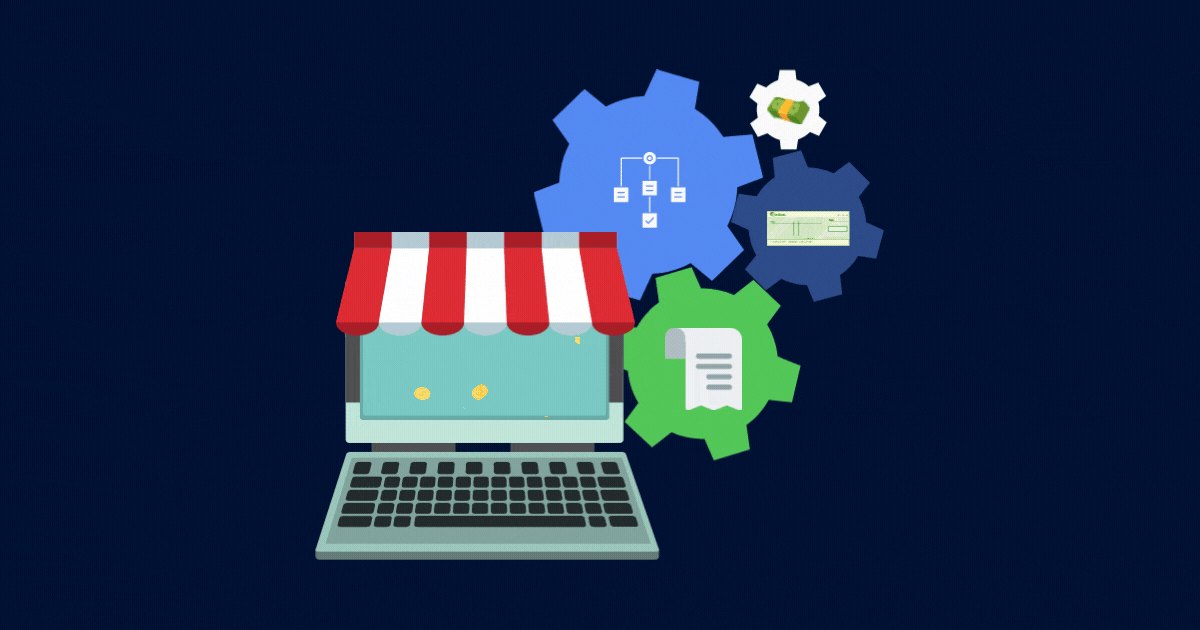
Ever follow Google or Apple Maps directions? Watch movie recommendations from Netflix? Use autocorrect in a document? Or ask Siri, Alexa, or Google about the weather?
These are just a few ways AI makes our daily lives easier.
Still, 24% of workers are worried AI will make their jobs obsolete. And with the prospect of fully automated bookkeeping workflows, accountants might fear the technology is coming for their jobs.
In this article, we’ll dispel those rumors and explain how AI and automation will more likely make their work more efficient, accurate — and rewarding:
- How AI and automation are impacting accounting functions today
- Eliminating manual processes
- Reducing costly human errors
- Digitizing physical checks and invoices
- Automating payments and receivables
- Seamlessly syncing multiple accounts
- Improving security
- How AI can make accountants superhuman
- Accounting automation: Where to start
How AI and automation are impacting accounting functions today
AI and automation are transforming accounting practices and processes. But what’s the difference between the two technologies?
Automation eliminates outdated, repetitive manual tasks, while AI tackles work requiring human-like thinking and judgment. For the foreseeable future, both require oversight and direction.
Both streamline bookkeeping processes, including accounts payable, accounts receivable, spend management, liquidity management, inventory control, cash flow management, and working capital management. Combined, they are:
- Eliminating manual processes
- Reducing costly human errors
- Digitizing physical checks and invoices
- Automating receivables and payables
- Seamlessly syncing multiple accounts
- Improving security
Here’s how.
Eliminating manual processes
In a recent Microsoft survey, 68% of workers said they don’t have enough uninterrupted focus time during their workday.
For many, it’s because mindless, repetitive tasks monopolize their time. Fortunately, there are now several accounting tasks a combination of automation and AI performs faster — and better — than humans:
- Data entry
- Transaction categorization
- Reconciliation
- Reporting
- Predictive analysis
While automation takes on tedious tasks, AI instantly analyzes mounds of data, identifying trends and patterns. Accountants and bookkeepers can use the insights it surfaces to optimize workflows, correct course, and act as strategic partners to clients or senior management.
Reducing costly human errors
Everyone makes mistakes, but errors and omissions are especially costly in accounting. Automation avoids most, including fumbled data entry, miscalculations, and duplicate entries.
Accounting automation can also help small- to medium-sized businesses maintain compliance by keeping up with new regulations, creating detailed audit trails, and precisely calculating taxes.
Digitizing physical checks and invoices
According to a 2023 Association for Financial Professionals survey, 63% of respondents reported their businesses faced fraud activity via checks.
With digital audit trails and fewer physical touchpoints, automation, and digitization not only make check payments more secure, they make them faster and hassle-free for payers:
- Online approvals mean no delays from in-person signatures
- Payment records are automatically reconciled with accounting software
Plus, check digitization makes partners happier. What vendor or supplier doesn’t appreciate getting paid faster?
Automating payables and receivables
Accounting automation isn’t new. After VisiCalc launched in 1979, there was no longer a need for physical “books.” Today, accounts payable (AP) and accounts receivable (AR) software streamlines and simplifies payments.
Automated AP platforms and AR platforms help growing businesses gain greater control over their cash. They level the playing field by making enterprise-quality financial tools available to small- and medium-sized businesses.
This cloud-based software helps accountants and bookkeepers customize rules to automate payment workflows while making receivables fast and frictionless. Single platforms that automate both AP and AR functions save even more time and money by centralizing all payment workflows.
Seamlessly syncing multiple accounts
Today, APIs automatically connect multiple bank accounts and accounting tools so data is seamlessly shared and reconciled. API integration also makes financial data more accessible and available to those who need it, while access control keeps unauthorized users out.
Despite ongoing advancements, not all platforms play together nicely. For example, if you’re considering AR and AP automation, choose a platform proven to integrate seamlessly with your other accounting software.
Improving security
By automating security protocols, digital accounting processes are often more secure than traditional ones:
- Encryption keeps sensitive information safe
- Access controls help businesses maintain compliance
- Patches and updates protect against emerging vulnerabilities
- Multi-factor authentication requires additional verification steps
- ISO certification requires strict standards and third-party audits
Of course, no accounting software is impenetrable. Combine the protocols above with strong passwords, VPNs, and physical security to help prevent cyberattacks.
How AI can make accountants superhuman
Microsoft’s Work Trend Report revealed a new robot/human alliance: 70% of survey respondents said they’re willing to turn work over to AI.
For accountants, administrative tasks are ripe for reinvention — even though a recent Thomson Reuters Institute found bookkeepers mostly “open-minded but cautious” about AI assistance.
Perhaps one hurdle is not knowing where to start.
For finance teams, generative AI (like Chat GPT, Google Bard, and Anthropic Claude) can make short orders of time-consuming tasks like drafting correspondence and answering basic questions. Also, many tools businesses use every day — like Microsoft Copilot, HubSpot AI, and Slack AI — have incorporated AI-powered features.
Accounting automation: Where to start
Wherever you dip your toe in the water, now’s the time to experiment with automation and AI — before employers more widely expect and require AI aptitude.
Plus, the benefits far outweigh the risks.
By breezing through mundane tasks, accounting automation software frees finance teams to focus on big-picture thinking. Combined with AI-powered tools, automation allows accountants and bookkeepers to spend more time where their skills are needed — financial analysis, forecasting, and budgeting.
If you’re ready to streamline your AR processes and AP processes, try Plooto free for 30 days. It’s an easy way to see how much time and money automation will save your business.
-1.png?width=677&name=Case%20Study%20CTA%20(2)-1.png)









